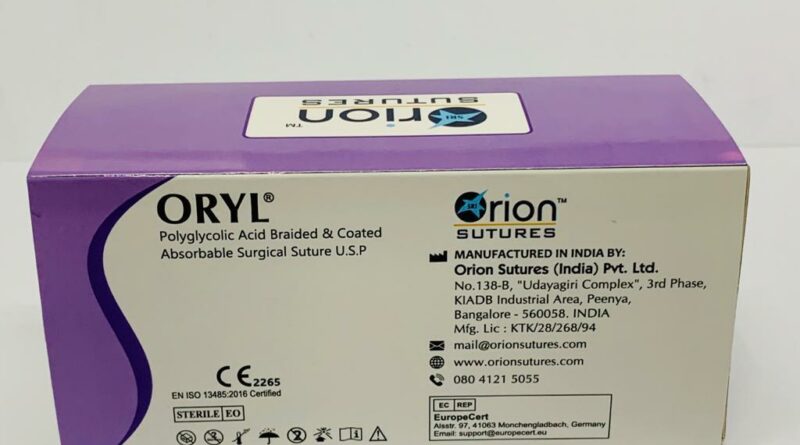POLYGLYCOLIC ACID SUTURES- A WOUND HEALING MATERIAL
Are you familiar with the term surgical sutures? A surgical suture is a medical device used by doctors to close a wound after an injury or surgery. Sutures can be absorbable that break naturally in the body or non-absorbable that has to be removed after a certain period. Under the category of absorbable sutures falls PGA sutures (polyglycolic acid sutures). PGA sutures are made from 100% Polyglycolic acid. These are braided, synthetic, and coated sutures and are usually violet in color. PGA sutures have to be stored away from direct heat and moisture. Their main feature is that they have exceptional tensile strength and handling properties.
BENEFITS OF POLYGLYCOLIC ACID SUTURE:
- It has minimum tissue reaction so it is safe to use
- Proper product sterilization is done.
- It passes softly through the tissues, causing minimal trauma to the underlying tissues as it is specially coated with materials such as Polycaprolactone and Calcium Stearate.
- These sutures have easy knot replacement and good knot security that is the ability of the knot to resist breakage.
- They are braided tightly to improve strength.
- They cause very few inflammatory reactions.
- It has a predictable absorption profile.
- They are reabsorbed by hydrolysis.
INDICATIONS OF A POLYGLYCOLIC ACID SUTURE:
- GIT(Gastrointestinal tract) surgery
- Gynecology(deformities in female reproductive system)
- Orthopedics (deformities of bones or muscle)
- General surgery
- Urology (disorders of Urinary system)
- Skin closure
- Eye surgery
- Plastic surgery
- Pediatrics (in infants)
CONTRAINDICATIONS OF POLYGLYCOLIC ACID SUTURE:
- Cardiovascular surgery- as it can cause rupture and dilation during or after the absorption phase.
- Neurosurgery-
- PGA cannot be used in some cases where extended wound support is needed that is for more than seven days.
- If there is any kind of inflammation or itching on the wound site of the patient then usage of PGA suture must be stopped.
PACKAGING OF POLYGLYCOLIC ACID SUTURE:
- Firstly, they are packed into a primary medical-grade paper folder.
- Then they are packed in aluminum foils that can be torn open or peel off.
- After this, they are packed into a secondary medical grade paper folder which is laminated from outside by polyester.
- They are further packed into small cartons.
- To protect from dirt, these boxes are further covered with a tamper-proof film.
- Finally, they are packed into big cartons.
DISPOSAL OF POLYGLYCOLIC ACID SUTURE:
- The contaminated sutures and needles should be disposed of properly in the proper color-coded bin for infectious waste according to biomedical waste management.
- The unused and expired packs should be put into an incinerator.
After the product is manufactured, the polyglycolic acid suture wholesalers act as a middle man between a manufacturer and a retailer. The wholesalers sell the product at the best price to the retailers. Polyglycolic acid sutures are used by surgeons all over the world to perform surgeries. As the number of surgeries has increased over the years, there is a rapid growth in polyglycolic acid suture companies around the globe. Surgeons should be familiar with and well aware of all the techniques and methods to use PGA sutures and follow all the necessary precautions.



